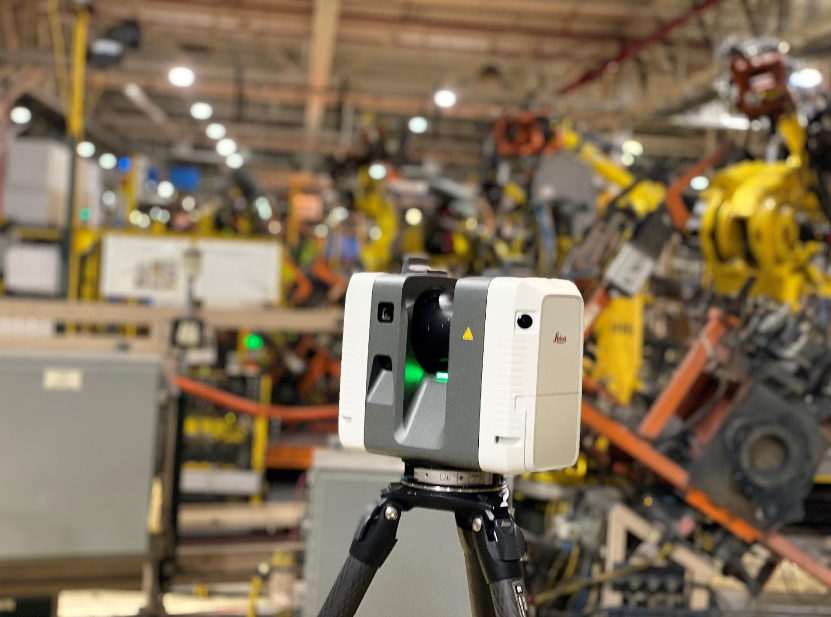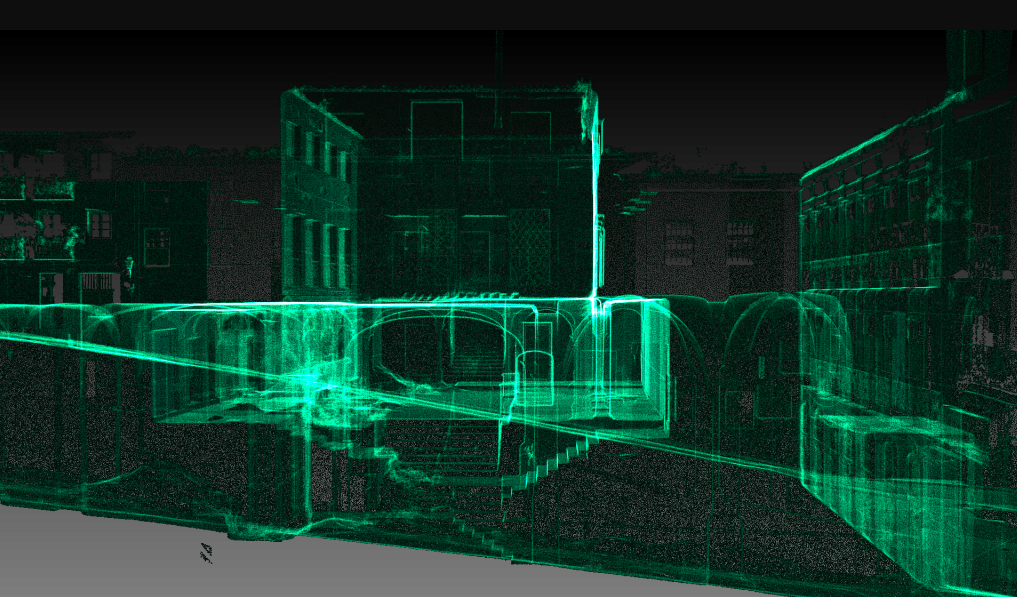The Impact of 3D Scanning Influences the Architectural Field
Enhancing Production Processes: The Effect of 3D Laser Scanning on Quality Assurance
3D laser scanning modern technology is transforming quality control in production. By providing high-resolution data and specific measurements, it makes it possible for makers to identify inconsistencies from specs with convenience. This improvement not just enhances evaluation procedures however additionally enhances functional efficiency. 3D Scanning. Nevertheless, the execution of this technology features its own set of difficulties. Checking out these facets reveals the wider effects for sectors and the future landscape of manufacturing

Recognizing 3D Laser Scanning Modern Technology
Although 3D laser scanning innovation has advanced significantly in recent times, its essential principle stays straightforward: recording the precise geometry of things using laser light beams. This innovation uses laser light to measure distances in between the scanner and various points on an item's surface area. The data gathered is after that refined to produce a thorough 3D model, accurately showing the measurements and contours of the checked things.
Generally, 3D laser scanners can be classified into two primary kinds: call and non-contact scanners. Contact scanners physically touch the challenge collect measurements, whereas non-contact scanners utilize laser light beams to capture data from a range. The flexibility of this modern technology enables its application across various industries, including production, building, and design. Its capability to create high-resolution models helps with quality control, reverse design, and quick prototyping, inevitably improving style accuracy and efficiency in manufacturing procedures.
Benefits of 3D Laser Scanning in Manufacturing
As manufacturers seek to improve performance and precision in their procedures, the benefits of 3D laser scanning have come to be significantly obvious. This ingenious innovation allows for very precise and rapid dimensions of complicated geometries, significantly reducing the moment required for top quality checks. By catching comprehensive information, makers can identify disparities early in the production process, consequently reducing waste and revamp expenses.
3D laser scanning assists in better layout validation, allowing designers to compare as-built problems with initial specifications. This capacity guarantees that any type of discrepancies are without delay addressed, improving overall item top quality. Additionally, the modern technology sustains the creation of electronic twins, which can be used for simulations and procedure optimizations. Because of this, makers not just increase their operational effectiveness but likewise improve their affordable advantage out there. On the whole, the integration of 3D laser scanning represents a transformative action toward attaining greater standards in producing top quality control.
Assimilation of 3D Laser Scanning Into Quality Assurance
Integrating 3D laser scanning into quality assurance procedures boosts the precision and performance of evaluations throughout production. This technology enables suppliers to capture in-depth, high-resolution information of assemblies and elements, enabling for precise dimensions and contrasts versus layout requirements. By using 3D laser scanning, companies can recognize variances from resistances a lot more properly, which is essential for keeping item stability.

Real-World Applications and Study
Real-world applications of 3D laser scanning in manufacturing show its transformative impact throughout different industries. Aerospace companies use this innovation to carry out exact evaluations of components, guaranteeing they fulfill rigid safety and security criteria. A remarkable case involved a leading aircraft supplier that used 3D laser scanning to streamline its quality control procedures, substantially minimizing evaluation times and mistakes.
In the auto market, producers have actually applied laser scanning to develop electronic doubles of their lorries, allowing real-time changes throughout production. One automotive firm reported a 30% decrease in rework prices after integrating this modern technology into their production line.
In the consumer items industry, companies are utilizing 3D laser scanning for rapid prototyping, permitting for quicker models and improved item styles. These applications highlight how 3D laser scanning not just improves precision yet also enhances performance and development across multiple manufacturing domains.
Getting Over Obstacles in Implementation
Implementing 3D laser scanning in producing presents several challenges that companies need to browse to fully realize its benefits. One considerable difficulty is the initial cost of tools and software, which can hinder firms from adopting this innovation. Furthermore, incorporating 3D laser scanning into existing workflows needs conquering resistance to change amongst employees, requiring comprehensive training programs to assure effectiveness. Information monitoring likewise positions a difficulty, as the high volume of info generated by 3D scanning must be successfully refined and examined to obtain actionable insights. Compatibility problems with heritage systems might prevent seamless assimilation, demanding prospective upgrades or adjustments. Resolving these difficulties is vital for producers intending to boost quality assurance and maximize manufacturing procedures. By establishing clear strategies for training, investment, and information monitoring, firms can alleviate these challenges and release the transformative capacity of 3D laser scanning in their operations.
Future Fads in 3D Laser Scanning for Production
As manufacturing proceeds to progress, the integration of 3D laser scanning with boosted automation is anticipated to transform manufacturing processes. Boosted information analytics will certainly play a vital duty in optimizing workflows and enhancing quality assurance. These patterns highlight the capacity for better performance and precision in manufacturing settings.

Raised Automation Assimilation
Although the assimilation of automation in production has actually been steady, the future of 3D laser scanning is positioned to accelerate this pattern substantially. As manufacturing procedures come to be progressively intricate, the demand for precise, real-time dimensions grows. 3D laser scanning technology provides automated data capture, minimizing labor prices and lessening human error. This combination permits manufacturers to simplify quality assurance procedures, enabling rapid discovery of variances in manufacturing. In addition, the placement of 3D laser scanning with robotics and automated systems promotes smooth operations, boosting overall performance. As suppliers embrace these innovative innovations, they can anticipate better precision and helpful hints productivity, positioning themselves competitively in a rapidly progressing market. The harmony in between automation and 3D laser scanning marks a substantial leap ahead in making innovation.
Boosted Data Analytics
The integration of automation has actually led the means for advancements in data analytics within the domain of 3D laser try these out scanning. Suppliers are progressively leveraging sophisticated algorithms and maker understanding methods to examine huge datasets created by laser scans. This improved information analytics capability enables real-time tracking of producing processes, making it possible for the recognition of variances and defects better than typical methods. Predictive analytics can anticipate potential issues, considerably decreasing downtime and improving overall performance. The ability to visualize information in three dimensions supplies much deeper insights into production process, promoting much better decision-making. As 3D laser scanning modern technology continues to progress, the function of data analytics will become progressively critical in driving technology and maintaining competitive benefit in production.
Often Asked Inquiries
What Industries Advantage one of the most From 3D Laser Scanning?
The markets that profit most from 3D laser scanning consist of production, construction, aerospace, automotive, and health care. These fields use the technology for precision dimensions, quality control, and effective style procedures, considerably enhancing overall operational effectiveness.
How Does 3D Laser Scanning Contrast to Typical Measurement Approaches?
3D laser scanning offers higher precision and speed contrasted to traditional dimension methods. It captures detailed geometries quickly, minimizing human mistake and helping with better evaluation, which ultimately enhances general top quality control in numerous sectors.
What Is the Cost of Implementing 3D Laser Scanning Technology?
The expense of applying 3D laser scanning technology differs significantly, usually varying from $10,000 to $100,000, depending on training, devices, and software application. Organizations needs to evaluate these expenditures against prospective performance and high quality renovations.
Are There Specific Software Program Needs for 3D Laser Scanning?
Yes, 3D laser scanning requires certain software application, consisting of information handling and modeling applications. Usual options encompass CAD software program, point cloud processing tools, and specialized applications that assist in the combination and evaluation of checked information for excellent outcomes.
For how long Does a Typical 3D Laser Scanning Process Take?
A normal 3D laser scanning procedure can take anywhere from a couple of minutes to a number of hours, relying on aspects like the size of the item, complexity of the setting, and needed degree of detail for accuracy.
3D laser scanning modern technology is transforming top quality control in production. 3D laser scanning innovation has developed considerably in current years, its fundamental concept continues to be additional resources straightforward: capturing the precise geometry of objects utilizing laser beam of lights. Incorporating 3D laser scanning into high quality control processes enhances the accuracy and efficiency of examinations throughout manufacturing (3D Scanning). 3D laser scanning innovation provides automated data capture, lowering labor prices and lessening human error. The price of carrying out 3D laser scanning innovation differs considerably, commonly ranging from $10,000 to $100,000, depending on software application, equipment, and training